Suzanis shine in Rippon Boswell’s first Vok sale
The first of three single owner auctions to offer the collection of Ignazio Vok took place at Rippon Boswell in Wiesbaden on Saturday 11 April 2015. Daniel Shaffer reports.
The first third of the Ignazio Vok Collection of top class Uzbek suzanis, as well as flatweaves from Iran, Turkey and the Caucasus, sold spectacularly well. The sale was a demonstration that good presentation (an excellent catalogue) and above all else, good provenance – in this case a much admired and universally liked collector, a man of charm and charisma with an artist’s eye for quality, who bought his embroideries and kilims from the best specialist dealers in the business – are marvellous substitutes for the market magic provided in other areas of the arts by the artist’s signature. At the time of writing, 84 of the 88 lots offered (95%) have found new homes, many in private collections, often for sums far exceeding generally realistic estimates. The gross yield, including 22% buyers premium, was €1,669,997 ($1,761,537), with the action more or less equally divided between strong bidders in the room, on the book and on the telephone.
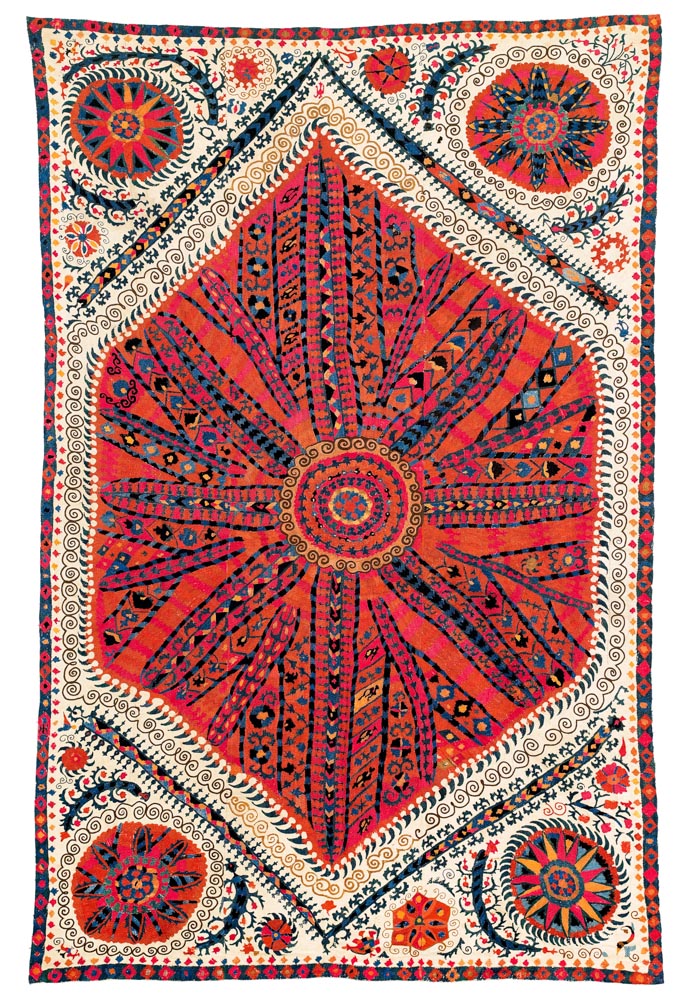
Lot 88, Large Medallion Suzani, Central Asia, Uzbekistan, Bokhara, 271 x 180 cm, 18th century, Estimate €60,000 – 70,000, Sold: €103,700
Highest price on the day was the €107,360 ($113,245) paid for Lot 23, a, immensely powerful Shahrisyabz embroidery with eccentrically ascending leaves and blossoms in flame-like movement. It was followed closely by Lot 88, a classic Bukhara Large-medallion suzani, which fetched €103,700 ($109,385). Third highest was Lot 28, an amazingly colourful Caucasian Dragon sumakh carpet, with a hard-to-believe date inscription reading AH 1224 (1810 AD), which sold for €90,280 ($95,230), the sole flatweave at the top end of the results table.
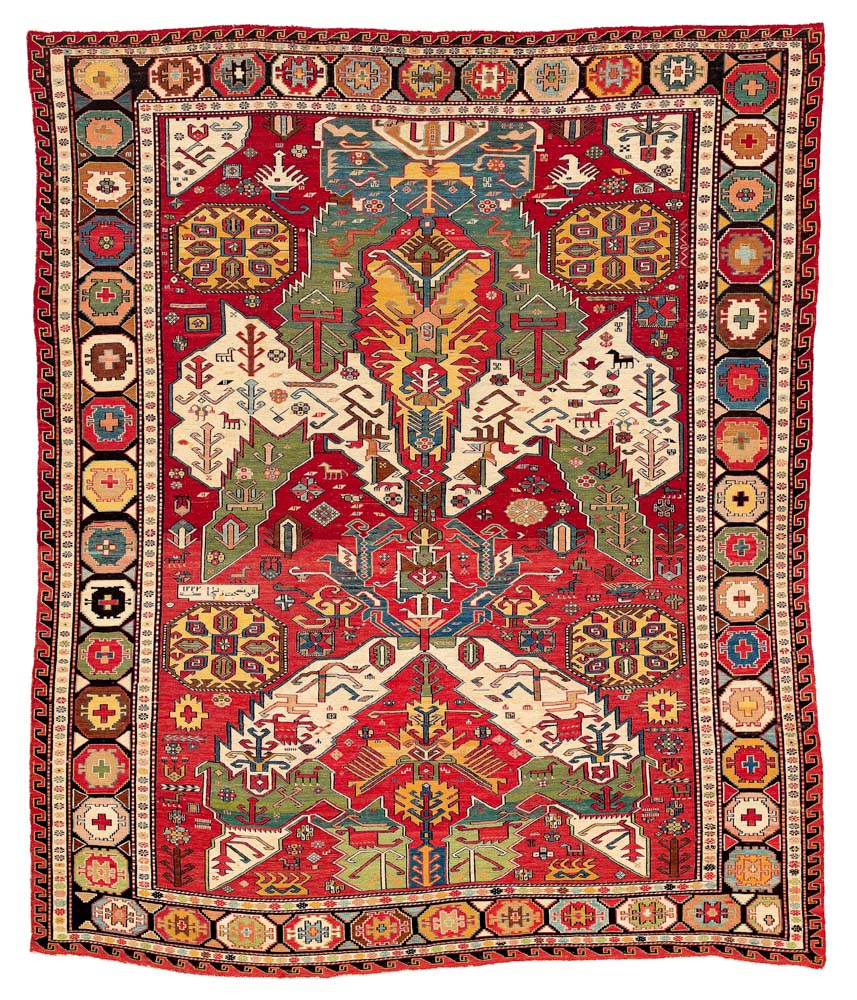
Lot 28, Dragon Sumakh, East Caucasus, Kuba region, 245 x 203 cm, Dated 1224 AH = 1810 AD, Estimate: €25,000 – 30,000 Sold: €90,280
In terms of prices expected and achieved, suzanis dominated the consignment. Lot 21, a pretty small size Bukhara Large-Medallion nim-suzani sold for €73,200 ($77,210), with one of the substantial cadre of US private collectors in the room as the underbidder, while Lot 81, another of the LMS genre, sold for €68,320 ($72,065) was underbid by a Canadian collector in the room. Another of the North American contingent, a collector from Connecticut, was the underbidder for Lot 42, an amazingly colourful Kermina suzani with dense glossy silk embroidery, which sold for €65,880 ($69,490).
A German dealer purchased Lot 18, a fabulous dark-blue silk ground ‘Lakai’ style Shahrisyabz embroidery for €61,000 ($64,345). A lime-green silk ground example of the same general type, Lot 16, fetched €53,680 ($56,620). A third ‘Lakai’- style Shahrisyabz, on an ivory silk ground, Lot 34, was sold for €48,800 ($51,475). Next in the table were three more suzanis: Lot 6, an unusual Shahrisyabz (€39,040/$41,180); Lot 67, a rare Shahrisyabz piece with a blue and green floral lattice surrounded by red borders (€36,600/$38,605); and Lot 5, a pretty Kermina nim-suzani with a sinuous tree-of-life field (€31,720/$33,460). The same price was paid for Lot 31, the next most successful of the assorted flatweaves, a grand yellow-ground Shahsavan cover with animals and birds in sumakh brocading.
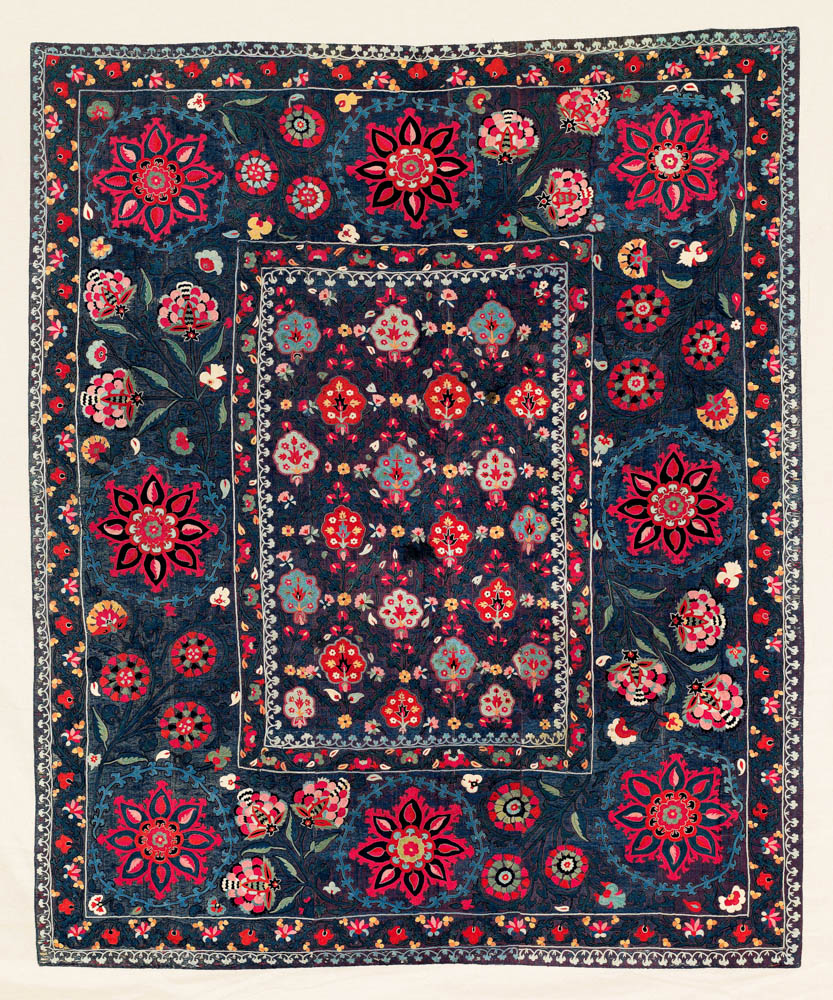
Lot 18, Lakai Suzani Origin: Central Asia, Uzbekistan, Shakhrisyabz, 195 x 160 cm, Mid 19th century, Estimate: €40,000 – 50,000, Sold: €61,000
Expectations were significantly lower for the flatweaves, but they too performed well against some quite modest estimates, especially several of the Anatolian kilims, including; Lot 20, a Balıkesir banded piece and Lot 60, a Karapinar both of which sold for €26,840 ($28,310). Lot 74, a spectacular Aksaray with three medallions was a bargain at €21,960 ($23,165).
The remaining four unsold lots – three suzanis and one Anatolian kilim – were all provisional sales close to the reserves and it is likely that the final result will be a 100% disposal and that Herr Vok’s decision to spread around some of the joy he has had assembling the collections has been well justified.
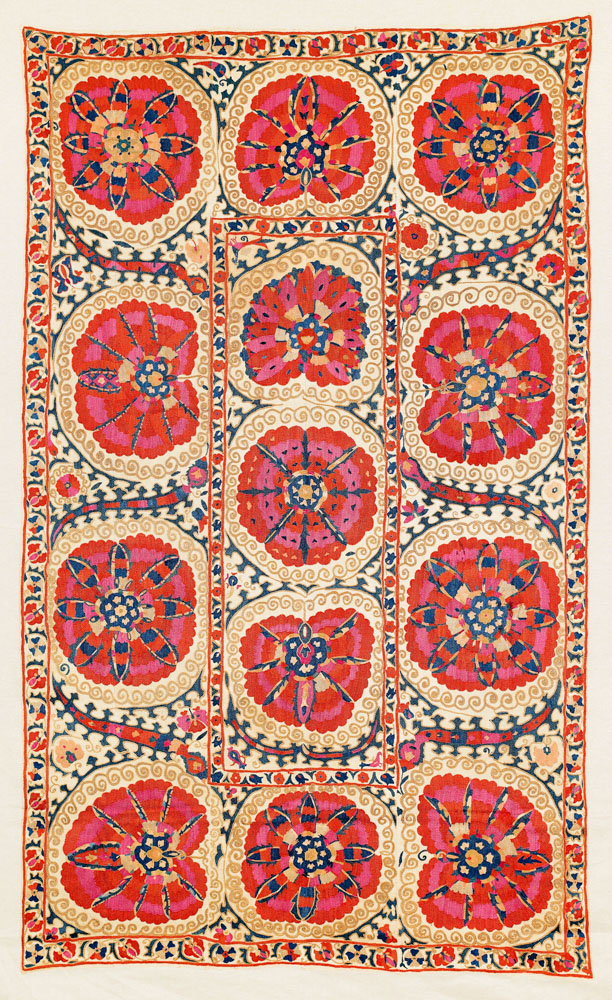
Lot 81, Large Medallion Suzani, Central Asia, Uzbekistan, Bokhara, 271 x 165 cm, Ca. 1800 or earlier, Estimate: €40,000 – 50,000 Sold: €68,320
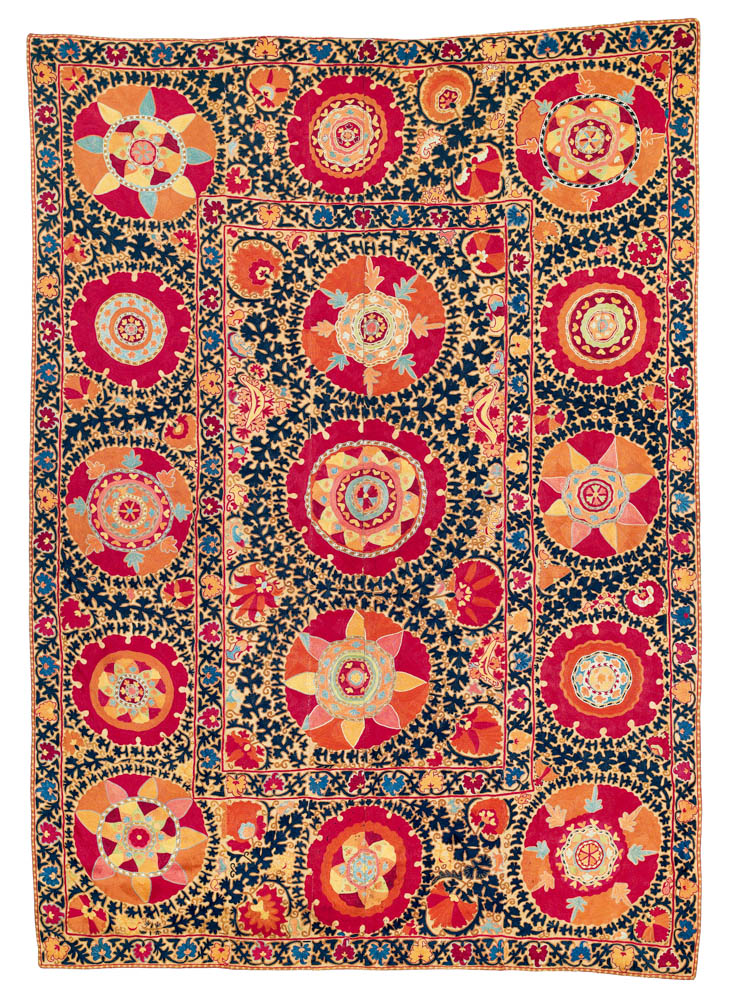
Lot 42, Kermina Suzani, Central Asia, Uzbekistan, 260 x 188 cm, Mid 19th century, Estimate: €30,000 – 35,000 Sold: €65,880
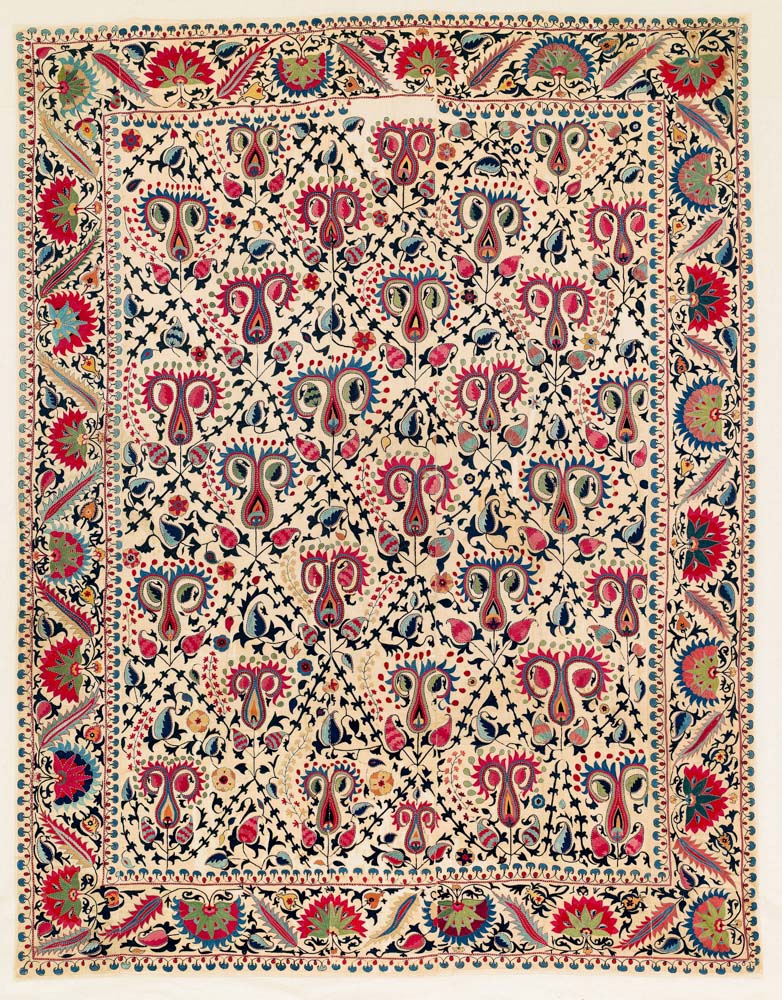
Lot: 34, Lakai Suzani, Central Asia, Uzbekistan, Shakhrisyabz, 282 x 220 cm, First half 19th century or earlier, Estimate: €45,000 – 55,000 Sold: €48,800
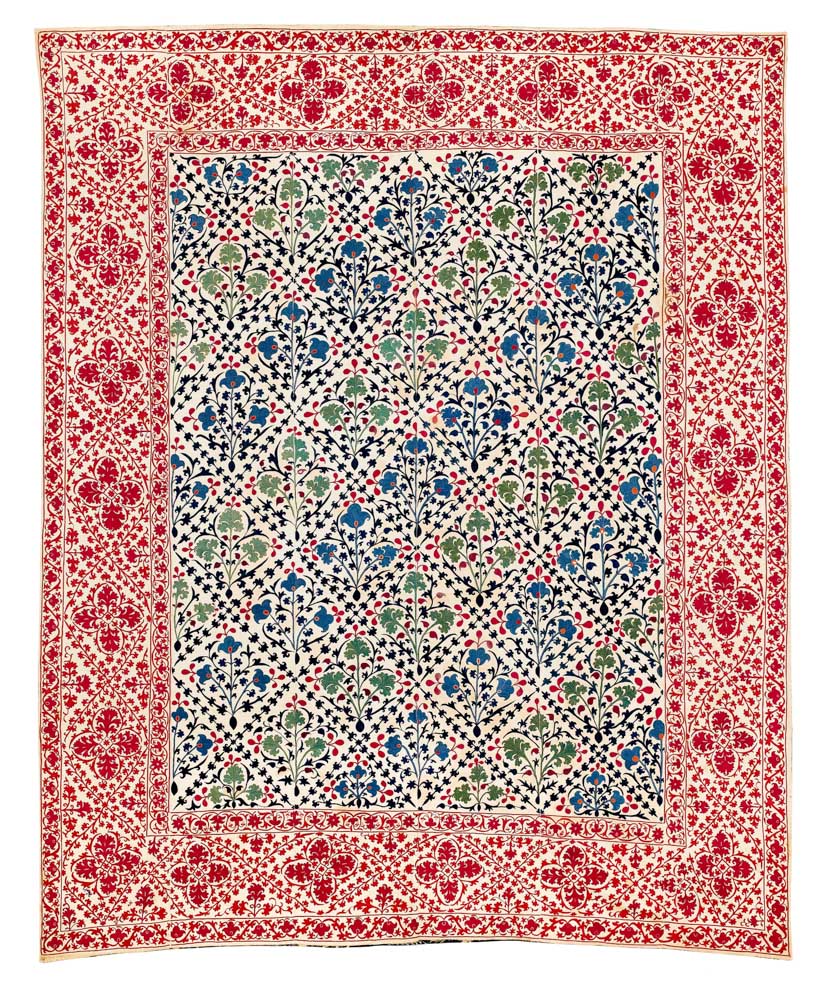
Lot 67, Shakhrisyabz Suzani, Central Asia, Uzbekistan, 268 x 218 cm, Mid 19th century, Estimate: €35,000 – 40,000 Sold: €36,600

Lot: 31 Shahsavan Flatwoven Cover, South East Caucasus, Moghan region, 376 x 185 cm, Mid 19th century, Estimate: €18,000 – 23,000 Sold: €31,720
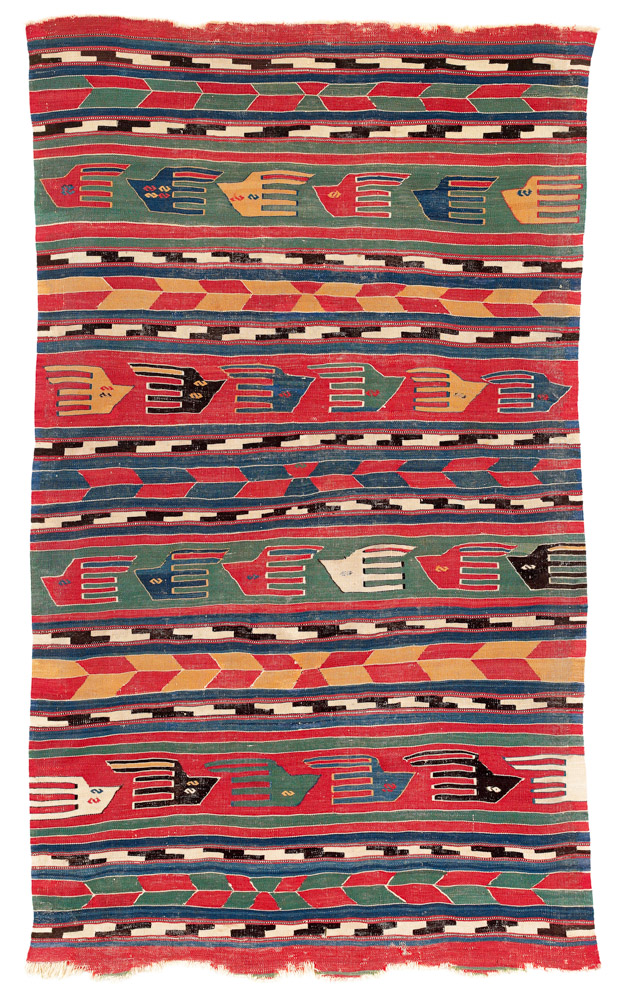
Lot 20, Balikesir Kilim, North West Anatolia, 252 x 145 cm, Late 18th century, Estimate: €12,000 – 15,000 Sold: €26,840
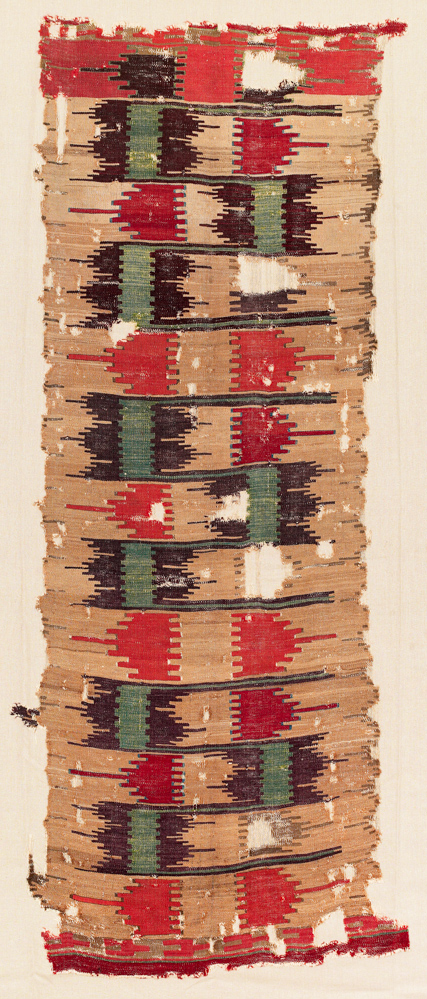
Lot 60, Karapinar Kilim, Central Anatolia, Konya region, 260 x 105 cm, 18th century, Estimate: €6,000 – 8,000 Sold: €26,840

Lot 74, Aksaray Kilim, Central Anatolia, Cappadocia, 345 x 144 cm, Ca. 1800 or earlier, Estimate: €20,000 – 25,000 Sold: €21,960


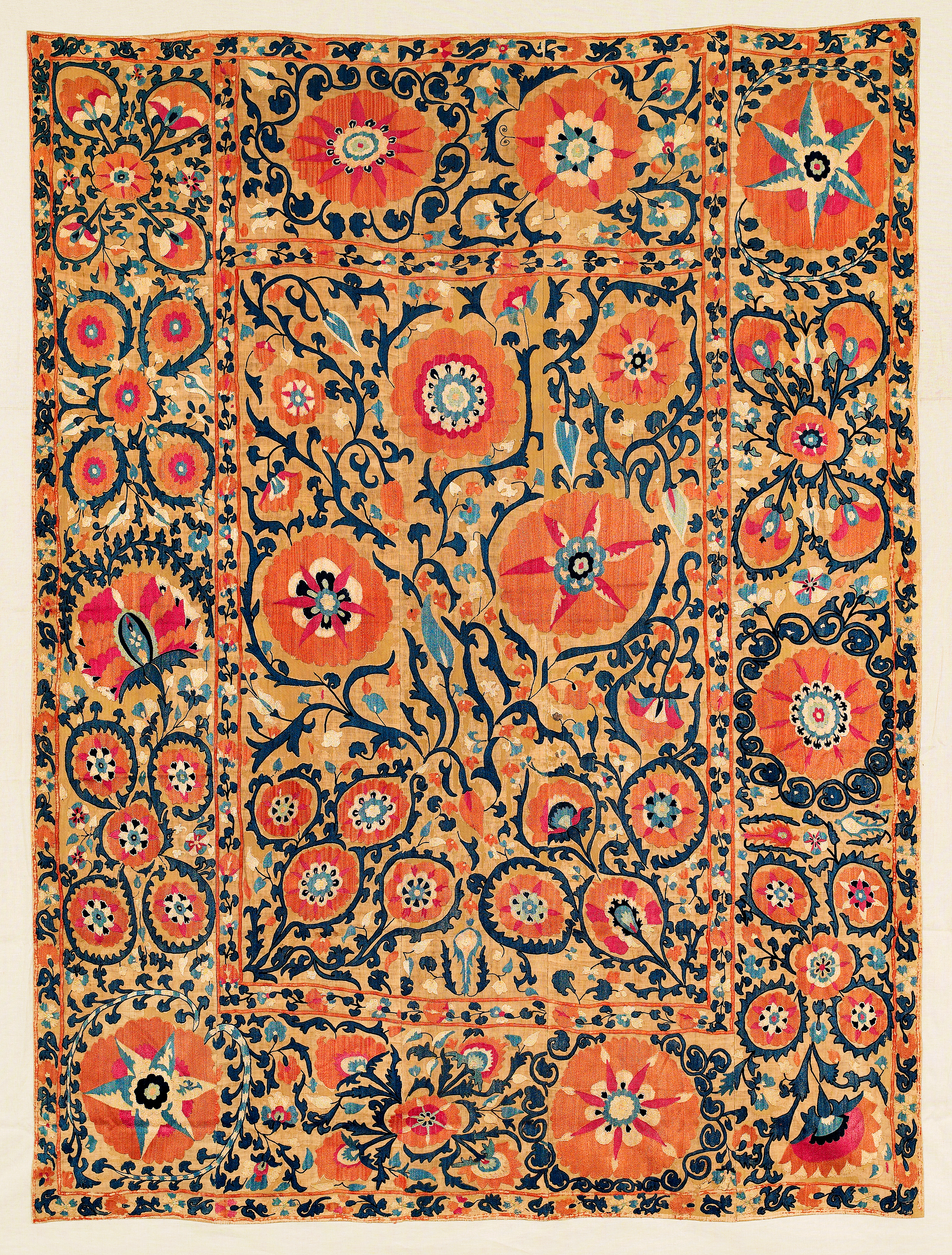
























Comments [0] Sign in to comment